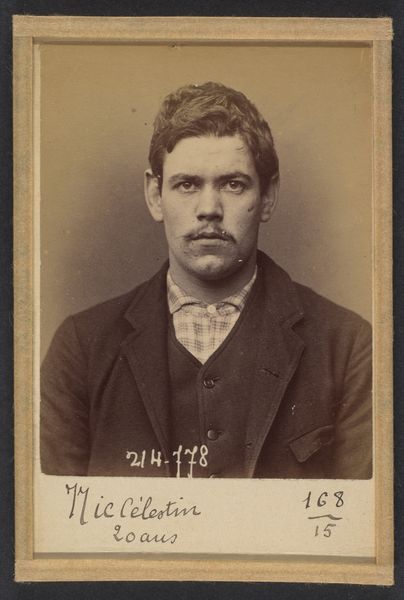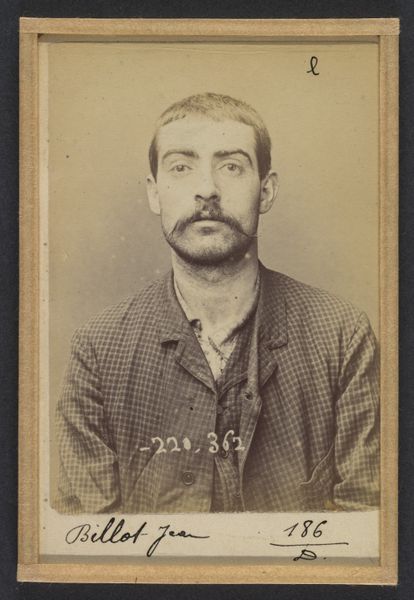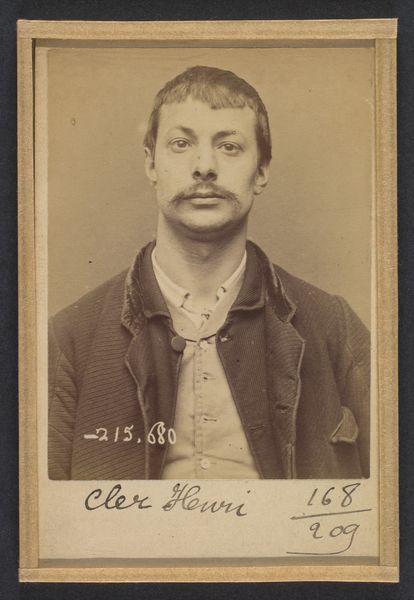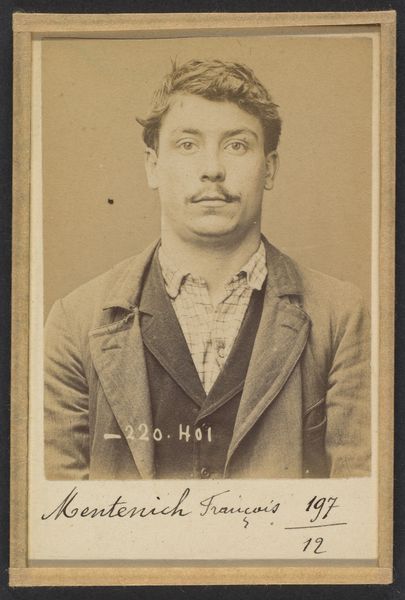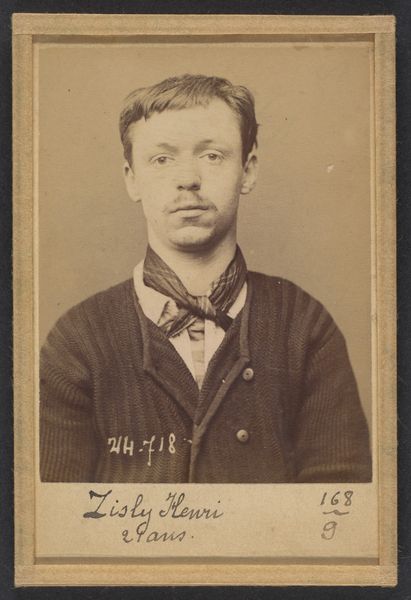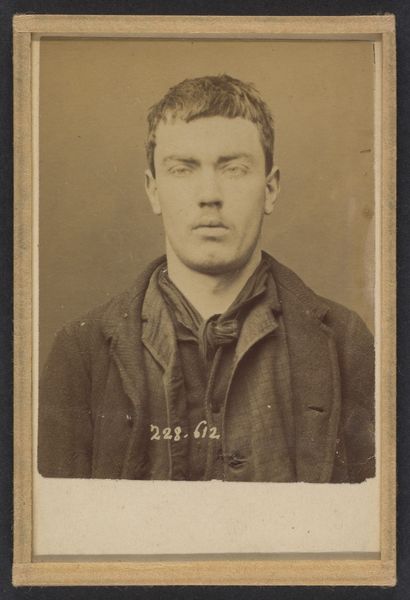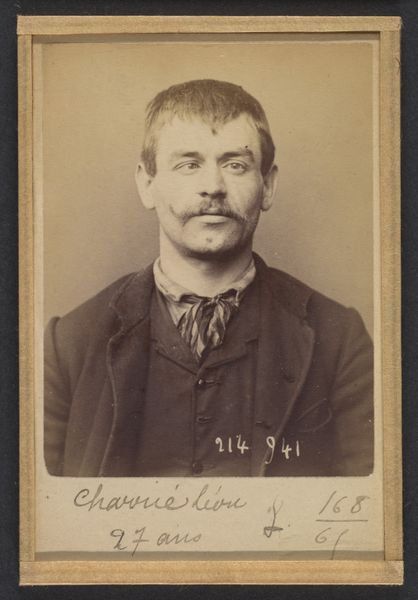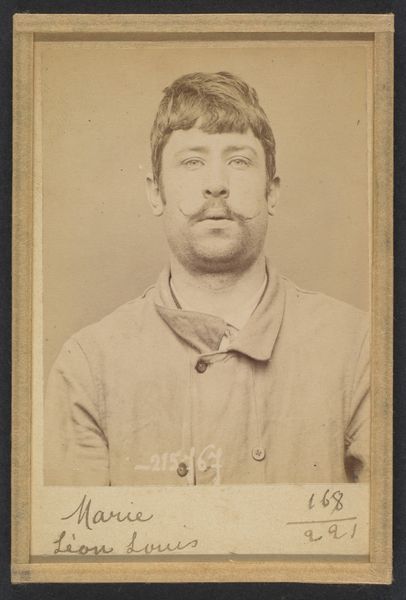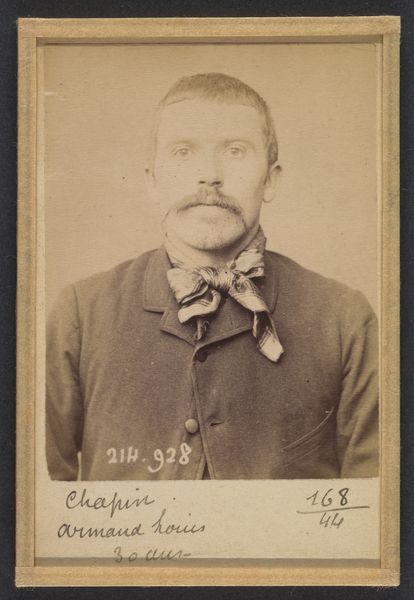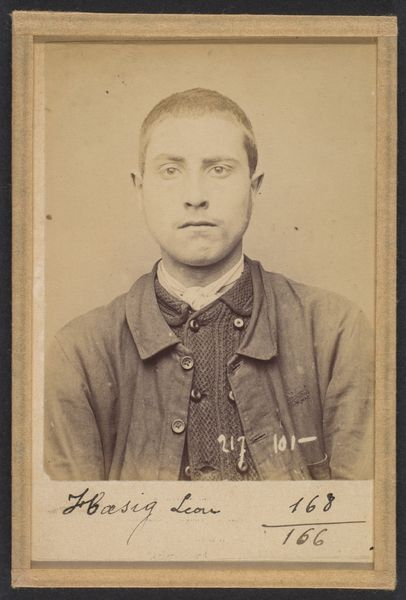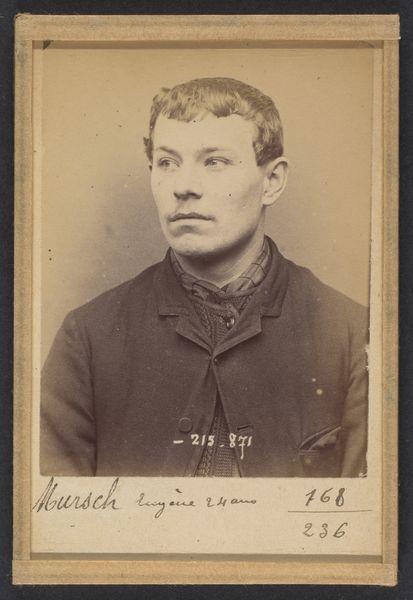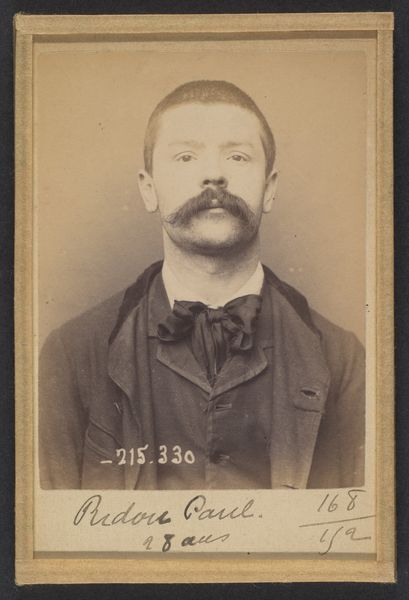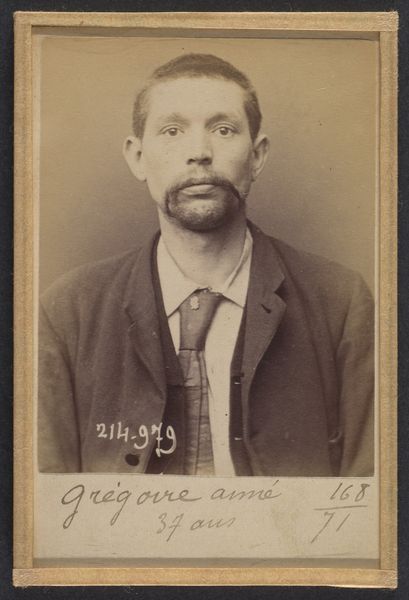
Thibivilliers. Eugène. 23 ans, né à Pinseux-le-Haut-Verger (Oise). Polisseur de métaux. Cris séditieux. 5/3/94 1894
0:00
0:00
photography, gelatin-silver-print
#
portrait
#
photography
#
historical photography
#
gelatin-silver-print
#
realism
Dimensions: 10.5 x 7 x 0.5 cm (4 1/8 x 2 3/4 x 3/16 in.) each
Copyright: Public Domain
Curator: Here we have a gelatin-silver print from 1894 by Alphonse Bertillon, titled "Thibivilliers. Eugène. 23 ans, né à Pinseux-le-Haut-Verger (Oise). Polisseur de métaux. Cris séditieux. 5/3/94." It’s currently held here at the Metropolitan Museum of Art. Editor: Oh wow, that's intense! Even before knowing the title, there's such a weight to this portrait. A very formal presentation combined with an everyday kind of scarf. It evokes a palpable sense of unease. Curator: Indeed. Bertillon was a French police officer and biometrics researcher. He pioneered this mugshot system, and it’s fascinating to see how this objective scientific gaze is mediated by the aesthetic conventions of portraiture. Note how this ‘criminal’ almost meets our eye, seemingly trying to reclaim agency. Editor: Right! It's as if the very act of being photographed, even under such controlled and dehumanizing circumstances, became a form of defiance. And I’m fixated on those "seditious cries." What were they about? Did this polisseur dream of more? Or was he simply drunk? It makes me want to invent a backstory for him, this forgotten revolutionary. Curator: His story unfortunately has become largely homogenized into this systematic practice. The gelatin-silver print offered the perfect medium for reproducing and archiving these images, creating a vast visual database that linked identity, deviance, and social control, an early method in eugenics to 'prove' moral depravity by physical means. Editor: Gosh, that adds another layer of melancholy. Makes me feel almost complicit to be looking. There’s so much injustice baked right into the process, and here we are centuries later, analyzing its composition. I wonder what became of Eugène. Curator: I agree. This image stands as a stark reminder of how the apparatus of power shapes individual stories, transforming personal narratives into instruments of social management and political rhetoric. Editor: And also a powerful, albeit disturbing, testament to photography’s enduring ability to capture, and maybe, unwillingly, even resist these narratives. Thanks for walking me through that; it gives one pause.
Comments
No comments
Be the first to comment and join the conversation on the ultimate creative platform.
